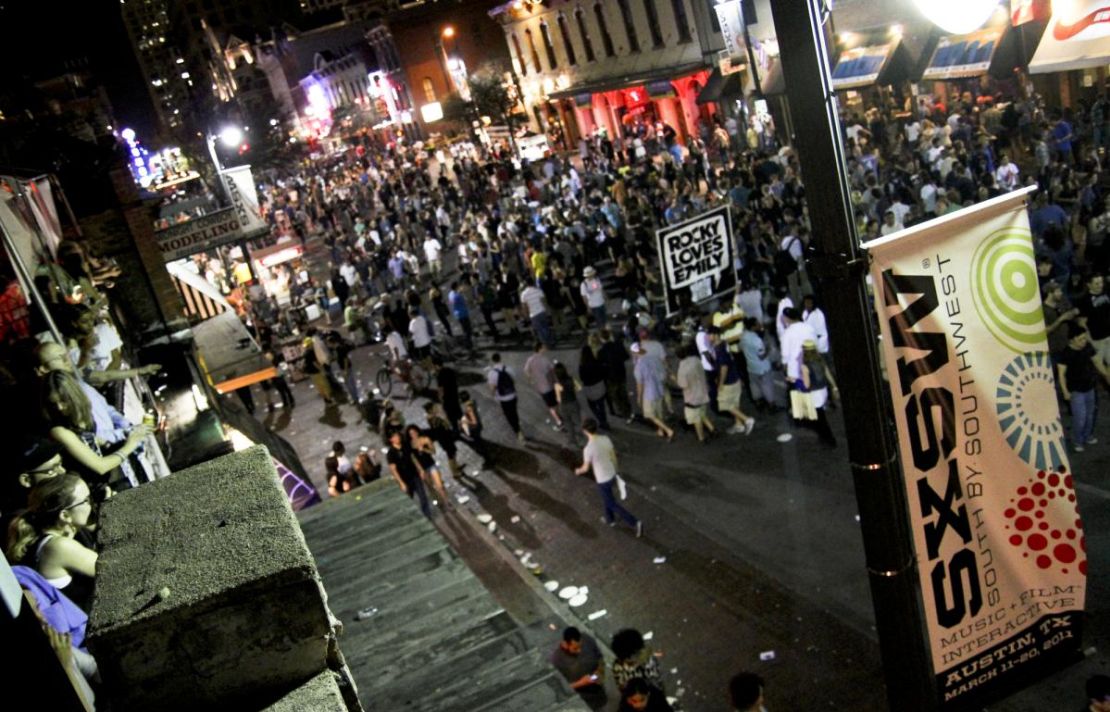Editor’s Note: CNN Tech will be covering all the happenings from SXSW. Follow our updates on Twitter at @cnntech.
Story highlights
Observers say hype around South by Southwest Interactive is more muted this year
Some SXSW veterans feel the festival may have reached a saturation point
SXSW is seen as a place to preview trends that may become mainstream in a few years
Just days before the festival, no big blow-out events have been announced
In South by Southwest Interactive, the tech-geek festival that begins here Friday, some see a five-day spring break of sorts: a chance to discover some buzzy new apps, catch a few panels and party alongside Web celebrities, futurists and many, many bloggers.
But others see the festival as a microcosm of the larger tech-culture community, a place to preview things that may become mainstream in a few years and where trends that play out in downtown Austin are indicators of what’s to come.
Which is why we wonder each year: Has the festival peaked? Will the irrationally app-exuberant bubble finally burst?
If SXSW Interactive doesn’t keep growing at up to 40% every year, does that mean the tech industry is slowing down or that the festival itself has reached capacity? Or is it only the hype that has plateaued?
This year, some SXSW veterans feel the maturing festival, which began in the late 1990s, may have reached a saturation point, especially when it comes to startups trying to draw attention to new products. SXSW Interactive famously helped Twitter get off the ground in 2007 and gave apps such as Foursquare and Highlight a boost in recent years.
But as SXSW has gotten crowded, it’s become much harder to stand out.

“I feel like people are having to put more effort because there’s so much noise and so much going on,” said Jennifer Sinski, an entrepreneur who runs RSVPster, which will auto-RSVP attendees to unofficial parties and events for a fee.
This year, Sinski said, “There’s really no big app expected to launch, nothing huge people are excited for on the tech side.”
That thought was echoed by a recent TechCrunch article wondering whether the era of big SXSW app launches may have passed.
Just days before the festival starts, there have also been no big blow-out events announced to rival 2012’s American Express concert featuring Jay-Z, Bruce Springsteen’s powerhouse gig or the party for the app Mobli that drew investors Leonardo DiCaprio and Tobey Maguire to town.
American Express will still be at the festival, but it will likely keep a lower profile given it announced 5,400 job cuts in January. Microsoft is no longer a sponsor at Interactive this year, and the annual TechKaraoke event will be missing.
That being said, rumors that Justin Timberlake will perform continue to swirl and notables such as former Vice President Al Gore, entrepreneur Elon Musk, broadcaster Rachel Maddow and NBA star Shaquille O’Neal are part of the official programming. And this year’s themes of private space travel, 3-D printing, hacker culture and crowdfunding, still feel forward-looking.
Hugh Forrest, the longtime director of SXSW Interactive, says a slowing of growth may actually benefit the festival, which in recent years has put a strain on Austin’s infrastructure. Forrest says that based on registration so far, the Interactive part of the festival is expected to grow at a more modest rate of 5% to 8% this year.
“It’s definitely not the sharper increases we’ve had in the last few years,” Forrest said. “In many ways, that’s a good thing. It gives us the bandwidth to work out some of the rough edges.”
Some of the growing pains, especially in the festival’s Startup Village and Accelerator (a kind of “American Idol” competition for startups), prompted the festival to expand its reach beyond Austin. In August, it will launch V2V in Las Vegas, a new SXSW Interactive conference focused on tech entrepreneurship.
It’s one way SXSW is hoping to alleviate the hotel crunch and downtown congestion that happens here every March.
Stephanie Wonderlin, a senior manager and social strategist with Momentum Factor, will be attending Interactive for her third year. Last year, she hosted videos for Chevy, which was pushing its Volt vehicles to techies at the fest.
Wonderlin believes things have been quieter going into Interactive this year, at least from her perspective. “I keep asking myself, ‘What do I feel is missing?’ I don’t know if it’s me being snooty.”
For 2013, she says her schedule has shifted from big parties to smaller gatherings and networking, a trend she’s seeing among friends, some of whom aren’t bothering to pay for a badge.
“I think the size and how big it’s gotten were just so overblown that maybe people who have to be there now want to do things on their own. One person told me, ‘I would rather grab a bottle of wine and head up to a rooftop with a small group of friends’ than go to the big parties,” Wonderlin said.
“A lot of people I know who are big company sponsors say they’re not even going to any of the sessions. I think the purpose of SXSW has changed.”
Sinski, who’s been going to SXSW Music for eight years and became more interested in Interactive as she launched her company, says that people who use her service are less interested in hype and big stars than they are in free food, real networking and companies that have something unique to show.
“Spending a lot of money isn’t as big a deal as it was two or three years ago,” she said. “Now it’s about what you can offer people.”




